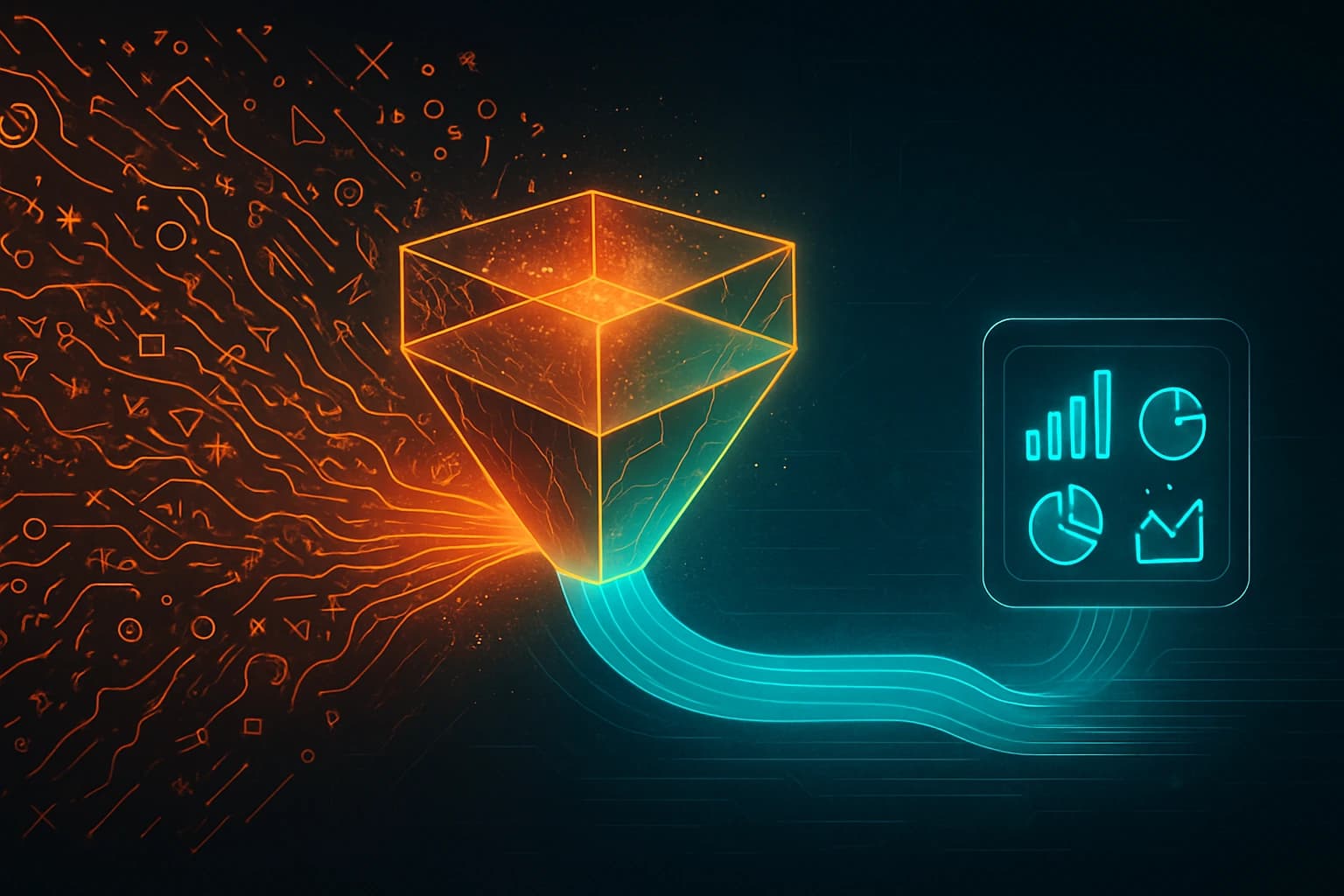What is Data Wrangling?
Data wrangling, also known as data blending or data remediation, is the practice of converting data from one “raw” form into another and plotting it.
The aim is to make it ready for downstream analytics. Often, this is handled by a data wrangler or a team of “mungers”.
As any data analyst will vouch for, this is where you get your hands “dirty” before getting on with the actual analytics with its models and visual dashboards.
Data wrangling encompasses all the work done on your data before the actual analysis.
It includes aspects such as weighing data quality and data context, and then converting the data into the required format.
Data wrangling is sometimes called data munging, data cleansing, data scrubbing, or data cleaning.
As a standalone business, data wrangling is projected to grow at different percentages, albeit positive, in the coming years, according to various studies.
This one forecasts that the data wrangling market, currently at over US$1.30 billion, will reach $2.28 billion by 2025, at a CAGR of 9.65% between 2020 and 2025.
By and large, data munging remains a manual process. When humans are involved in any process, two things are bound to happen: time is spent, and errors creep in.
If your enterprise does not have a dedicated team of wranglers, it is then left to your data analysts to do this work.
Industry surveys have shown that between 70 to 80% of a data analyst’s time goes into data wrangling, or just getting the data ready. That’s an awful “waste” of “qualified” time.
In an earlier post, we had talked about how “dirty” data or poor data riddled with inaccuracies and errors was responsible for erroneous analysis. This leads to time loss, missed objectives, and loss of revenue.
Getting your data “prepped” for analysis is THE most essential step in the data analytics process; it just cannot be emphasized enough. Without this step, algorithms will not derive any valuable patterns.
Detect and manage outliers in data wrangling efficiently >>> Talk to Our Experts
Importance of Data Wrangling in Data-Driven Marketing
Data wrangling has been the exclusive domain of trained, professional data scientists; this process may account for up to 80% of the analysis cycle.
Data wrangling tools rapidly format siloed information from social media, transactional data, and other sources to convert customer reactions into insights used to boost marketing efforts.
Boost customer loyalty
Marketers can use customer information to cultivate stronger connections with current and potential customers.
By examining information from each interaction a client has had with a business, marketers can offer tailored client experiences according to real-time intelligence.
Data Wrangling Challenges
Inspecting use cases: Analysts should thoroughly understand use cases by identifying which subset of entities is suitable, whether they are attempting to forecast the likelihood of an event or to evaluate a future amount.
Inspecting identical entities: After downloading impure data, it’s difficult to judge what’s unrelated and what’s related.
For instance, we consider “consumer” as an entity. The data sheet may have a consumer named “Simon Joseph.” Another column might contain a different consumer, “Simon J.”
In these situations, you have to examine numerous factors as you delve deeply into the columns.
Exploring data: Eliminate redundancies before exploring the relationships among the results.
Preventing selection bias: Ensure that the training sample data accurately reflect the implementation sample.
One of the biggest challenges in machine learning today remains automating data wrangling. One of the main hurdles here is data leakage.
The latter refers to the fact that, during the training of the predictive model using ML, it uses data outside the large training dataset, which are unverified and unlabeled.
Data Wrangling vs. Data Cleaning vs. Data Mining
The activity of transforming and mapping data from one raw form to another is called data wrangling.
This involves feature engineering, data aggregation and summarization, and data reformatting.
Data cleaning is the process of taking impure data and storing it in the same precise format, correcting or removing issues related to data validity.
The data cleaning process can start only after reviewing and characterizing the data source.
Data mining is a narrower field that identifies hidden patterns in massive datasets to forecast future outcomes.
Essential Characteristics of Data Wrangling
Useable data
It formats the information for the end user, which enhances data usability.
Data preparation
Data preparation is challenging to achieve better results from deep learning and ML initiatives, so data munging is essential.
Automation
Data wrangling techniques, such as automated data integration tools, clean and transform raw data into a standard form that can be used frequently according to end needs.
Businesses use this standardized data to adopt challenging cross-dataset analytics.
Saves time
As mentioned earlier, data analysts spend too much time sourcing data from numerous sources and updating data sets, rather than conducting fundamental analysis.
Data blending offers errorless data to analysts quickly.
What are the Tools and Techniques of Data Wrangling?
It has been observed that about 80% of data analysts spend most of their time on data wrangling rather than on the actual analysis.
Data wranglers are often hired for the job if they have one or more of the following skill sets: knowledge of a statistical language such as R or Python, knowledge of other programming languages such as SQL, PHP, Scala, etc.
They use specific tools and techniques for data wrangling, as illustrated below:
- Excel Spreadsheets: This is the most basic structuring tool for data munging
- OpenRefine: a more sophisticated computer program than Excel
- Tabula: often referred to as the “all-in-one” data wrangling solution
- CSVKit: for conversion of data
- Python: Numerical Python comes with many operational features. The Python library provides vectorized mathematical operations on NumPy arrays, improving performance and execution
- Pandas: this one is designed for fast, easy data analysis
- Plotly: mainly used for interactive graphs like line and scatter plots, bar charts, heatmaps, etc
R tools
- Dplyr: a “must-have” data wrangling R framing tool
- Purrr: helpful in list function operations and checking for mistakes
- Splitstackshape: very useful for shaping complex data sets and simplifying visualization
- JSOnline: a useful parsing tool
Why the Need for Automated Solutions?
The introduction of artificial intelligence (AI) into data science has made it imperative that data wrangling be conducted with the strictest checks and balances.
Machine learning (ML), a subset of AI, requires a steady flow of vast amounts of data for an enterprise to derive maximum value from its data.
There can’t be a time lag between these two processes – data wrangling and data analytics – especially if AI is involved.
What are the 6 Steps in Data Wrangling?
It is often said that while data blending is the most critical first step in data analysis, it is the most ignored because it is also the most tedious.
To prepare your data for analysis, as part of data wrangling, there are six basic steps one needs to follow.
They are:
Data Discovery: An all-encompassing term that describes understanding what your data is about. In this first step of the data wrangling process, you get familiar with your data.
Data Structuring: When you collect raw data, it initially is in all shapes and sizes and has no definite structure.
Such data needs to be restructured to align with the analytical model your enterprise plans to deploy.
Data Cleaning: Raw data contains errors that must be corrected before it is passed to the next stage.
Cleaning involves the tackling of outliers, making corrections, or deleting insufficient data completely
Data Enriching: By this stage, you have become somewhat familiar with the data in hand.
Now is the time to ask yourself: Do you need to embellish the raw data? Do you want to augment it with other data?
Data Validating: This activity surfaces data quality issues that must be addressed through the necessary transformations.
The rules of validation require repetitive programming steps to check the authenticity and the quality of your data
Data Publishing: Once all the above steps are completed, the final output of your data wrangling efforts is pushed downstream for your analytics needs.
It is a core iterative process that throws up the cleanest, most valuable data possible before you start your actual analysis.
When Should You Use Data Wrangling?
Use this process when you obtain data from multiple sources and require modification before adding it to a database and executing queries.
Listed below are a few examples of when data wrangling would be helpful to:
Gathering information from various countries:
Data from various origins, like this, has to be standardized to be queried together in a single big database.
Scraping data from websites: Data from websites is stored and displayed in a readable, usable format for humans.
When data is scraped from websites, it must be organized into a format suitable for querying and database storage.
Additionally, it is also used to:
- Save steps related to the preparation and implementation of comparable datasets
- Find duplicates, anomalies, and outliers
- Preview and offer feedback
- Reshape and pivot data
- Aggregate data
- Merge information across different origins via joins
- Schedule a procedure to execute a trigger-oriented or time-oriented event
How Machine Learning Can Help in Data Wrangling
The development of automated solutions for data munging faces one major hurdle: data cleaning requires intelligence, not mere repetition of work.
Data wrangling means understanding precisely what you are looking for to resolve variances between data sources, or, say, the conversion of units.
A typical munging operation consists of these steps: extracting the raw data from sources, using an algorithm to parse the raw data into predefined data structures, and moving the results into a data mart for storage and future use.
The few data munging automation software available today use end-to-end ML pipelines.
But these are far and few in between. The market certainly requires more automated data wrangling software.
These are the different types of machine learning algorithms:
- Supervised ML: used for standardizing and consolidating individual data sources
- Classification: utilized to identify known patterns
- Normalization: used to restructure data into proper form.
- Unsupervised ML: used for exploration of unlabeled data
What are the Various Use Cases of Data Wrangling?
Some of the frequently seen use cases of data wrangling are highlighted below:
Financial insights
It can be used to identify insights invisible in data, forecast trends, and predict markets. It assists in making investment decisions.
Unified format
Various departments of the organization use multiple systems to collect data in numerous formats.
The process unifies data and converts it into a single format, providing a comprehensive view.
As it is, most industries are still in the early stages of adopting AI for data analytics.
They face several hurdles: the cost, tackling data in silos, and the fact that it is not really easy for business analysts – those who do not have a data science or engineering background – to understand machine learning.
Express Analytics Webinar: Don’t Wrestle With Your Data. The What, Why & How Of Data Wrangling
While a lot of effort has gone into automating data analytics with advanced technologies such as AI and ML, the same cannot be said for data munging. Automated solutions here are the need of the hour.
Most enterprises continue to use traditional extract-transform-load (ETL) tools for this. They cannot be blamed because there ain’t enough data-wrangling automated solutions in the market.
Poor data can be a bitter pill to swallow. Are you looking to improve your enterprise data quality? Then, our customer data platform, Oyster, is just what the data doctor ordered. Its influential AI-driven technology ensures a clean, trustworthy, and optimized customer database 24×7.
Click here to know more
The use of open source languages
A few data experts have started using open-source programming languages R and Python, along with their libraries, for automation and scaling.
Using Python, straightforward tasks can be automated without much setup. Again, things here are still at a nascent stage.
11 Benefits of Data Wrangling
Data wrangling is integral to organizing your data for analytics. This process has many advantages.
Here are some of the benefits:
Saves time: As we said earlier in this post, data analysts spend much of their time sourcing data from different channels and updating data sets rather than the actual analysis.
This process provides analysts with accurate data within a specific timeframe.
Faster decision-making: It helps management make decisions more quickly.
The whole process aims to achieve the best outputs in the shortest possible time.
Data wrangling enhances the decision-making process for an organization’s management.
Helps data analysts and scientists: Data wrangling ensures clean data is handed over to data analyst teams.
In turn, it helps the team focus entirely on the analysis. They can also focus on data modeling and exploration.
Useable data: It improves data usability by formatting it for the end user.
Helps with data flows: It helps rapidly build data flows within a user interface and effortlessly schedule and automate the data flow.
Aggregation: It helps integrate different types of data and their sources, such as database catalogs, web services, and files.
Handling big data: It helps end users process vast volumes of data effortlessly.
Stops leakage: It helps control data leakage when deploying machine learning and deep learning technologies.
Data preparation: Proper data preparation is essential to achieving good results from ML and deep learning projects; that’s why data munging is necessary.
Removes errors: By ensuring data is in a reliable state before analysis and use, data wrangling reduces the risks of faulty or incomplete data.
Overall, data wrangling improves the data analytics process.
How Express Analytics Can Help with Your Data Wrangling Process
Our years of experience in handling data have shown that the data wrangling process is the most critical first step in data analytics.
Our process includes all six activities enumerated above, such as data discovery, to prepare your enterprise data for analysis.
Our data wrangling process helps you find intelligence within your most disparate data sources.
We fix human error in data collection and labeling, and we validate each data source.
All of this helps place actionable, accurate data in the hands of your data analysts so that they can focus on their primary task: data analysis.
Thus, our process helps your enterprise reduce the time spent collecting and organizing data and, in the long term, enables your business leaders to make better-informed decisions.
Click on the banner below to watch our three-part webinar – Don’t wrestle with your data: the what, why & how of data wrangling. In each of these webinars, our in-house analysts walk you through topics like “How to craft a holistic data quality and management strategy” and “The trade-off between model accuracy and model processing speed”.
In conclusion: Given the amount of data being generated almost every minute today, if more ways of automating the data wrangling process are not found soon, there is a very high probability that much of the data the world produces shall continue to sit idle, and not deliver any value to the enterprise at all.


